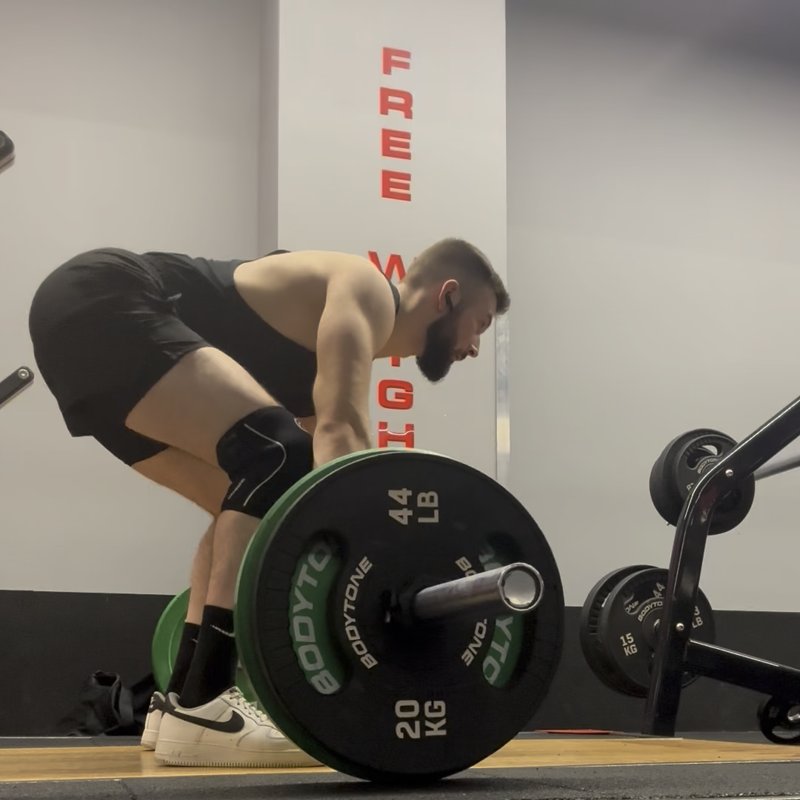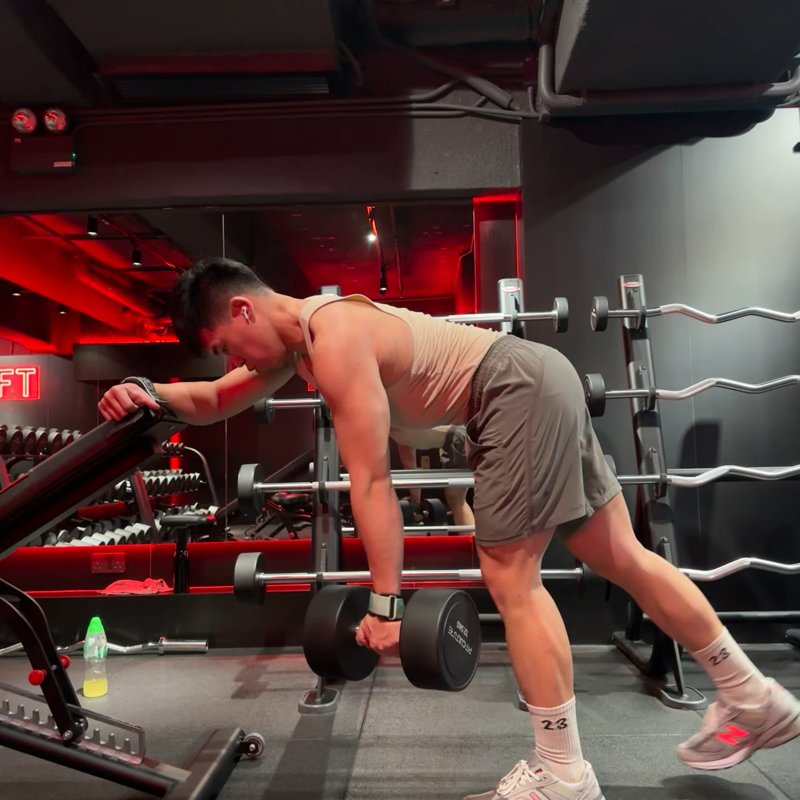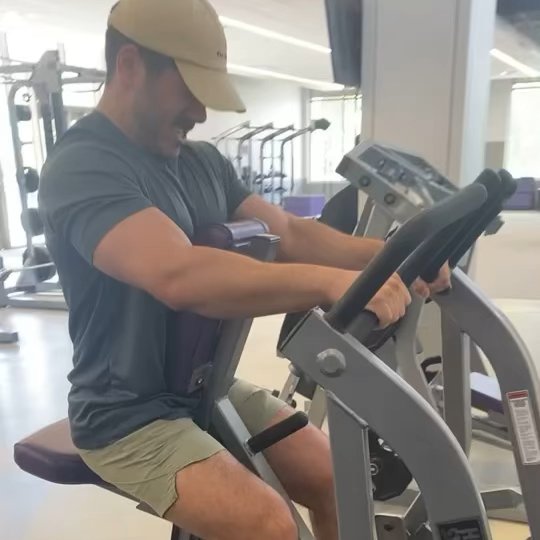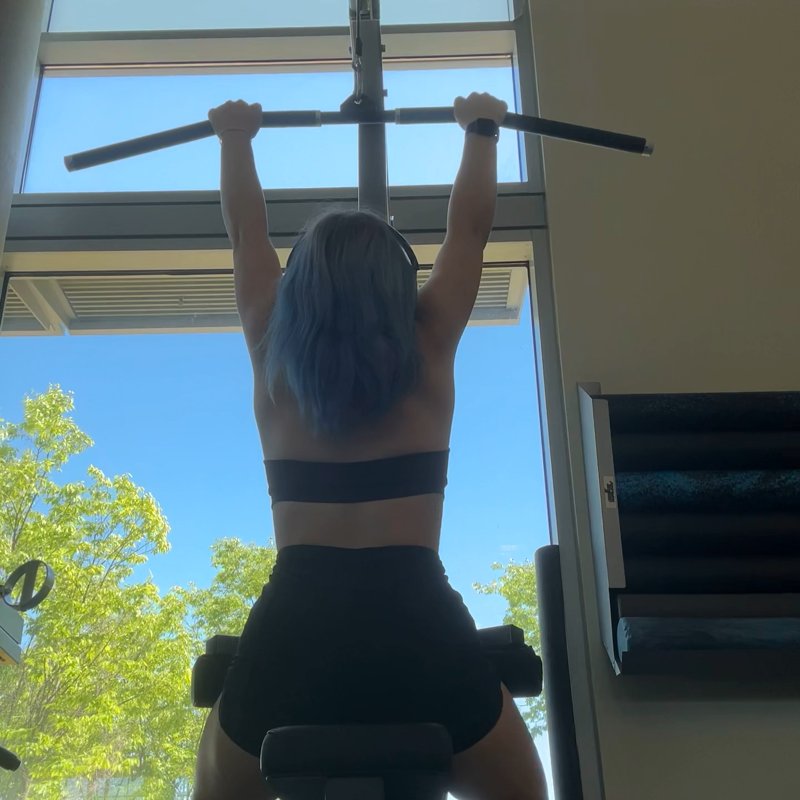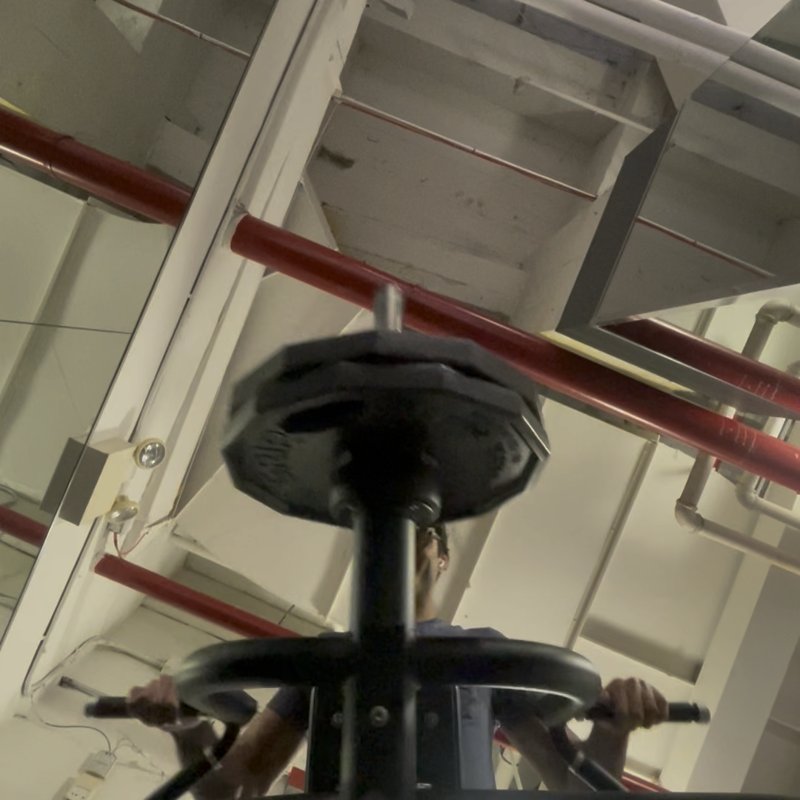Barbell Row: The Ultimate Guide
The Barbell Row is a powerful compound exercise that primarily targets the muscles of the back, particularly the latissimus dorsi, rhomboids, and traps, while also engaging the biceps and rear deltoids as secondary movers.

Quick Facts
Key Benefit
Builds back thickness and strength
Primary Muscles
Erector Spinae, Lats, Rhomboids, Traps
Secondary Muscles
Biceps, Forearms, Hamstrings, Posterior Deltoids
Equipment
barbell
Difficulty
Intermediate
Type
Strength
In This Guide
Ready to master the Barbell Row?
Track your progress, see improvements over time, and build strength consistently.
Download GravitusThe Barbell Row is one of the most effective compound exercises for developing back strength and thickness. Also known as the bent-over row, this movement involves pulling a barbell from a hinged position at the hips toward your torso, engaging multiple muscle groups simultaneously. Unlike many isolation exercises, the barbell row trains the back as a functional unit, mimicking the pulling patterns used in everyday life and athletic endeavors. It's considered a fundamental movement in strength training programs and is especially valued for its ability to build a strong, muscular back while enhancing overall posterior chain development. Whether your goal is to improve your deadlift, enhance your posture, or develop an impressive back, the barbell row deserves a place in your training program.
Benefits of the Barbell Row
The barbell row offers numerous advantages for strength athletes, bodybuilders, and fitness enthusiasts alike.
Back Development
Effectively targets multiple back muscles simultaneously, creating balanced development and thickness throughout the entire back.
Improved Posture
Strengthens the posterior chain muscles that support proper spinal alignment and can help counteract the forward-leaning posture common in modern life.
Functional Strength
Builds pulling strength that transfers to everyday activities and other exercises like deadlifts and pull-ups.
Hormonal Response
As a compound movement that engages large muscle groups, it can stimulate greater testosterone and growth hormone release compared to isolation exercises.
Proper Form & Technique
Starting Position
- Stand with feet shoulder-width apart, toes pointed slightly outward for stability.
- Position the barbell over the middle of your feet (where your shoelaces would tie).
- Hinge at the hips while maintaining a neutral spine, lowering your torso until it's almost parallel with the floor (approximately 45° angle).
- Grip the barbell with hands slightly wider than shoulder-width apart, using an overhand grip (palms facing down).
- Pull your shoulders back and down, engaging your lats before initiating the movement.
Movement
- Pull the barbell toward your lower ribcage or mid-abdomen by driving your elbows up and back.
- Keep your elbows close to your body throughout the movement, not flaring outward.
- Maintain your torso position - avoid using momentum or "jerking" the weight up.
- Squeeze your shoulder blades together at the top of the movement, holding this contracted position briefly.
- Slowly lower the barbell back to the starting position with control, fully extending your arms.
- Repeat for the desired number of repetitions while maintaining proper form and torso angle.
Key Form Tips
Torso Position
Keep your torso angle consistent throughout the set - maintain position between reps.
Spine Alignment
Maintain a neutral spine position by looking at a spot on the floor about 1-2 feet in front of you.
Core Engagement
Brace your core throughout the movement as if preparing to take a punch.
Breathing
Inhale during the lowering phase and exhale forcefully during the pull.
Grip Strength
If grip strength is limiting your rows, consider using lifting straps or alternating your grip.
Muscles Worked
Primary Muscles
- lats: The largest back muscle, running from the mid-back to under the armpit, is the primary mover during the pulling motion.
- rhomboids: These muscles between your shoulder blades are heavily engaged when you squeeze your shoulder blades together at the top of the movement.
- traps: The trapezius muscles covering the upper back and neck are significantly activated during the upper portion of the row.
- erector spinae: These muscles along the spine work isometrically to maintain your bent-over position throughout the exercise.
Secondary Muscles
- biceps: Act as secondary movers during the pulling motion and assist in bending the elbow.
- posterior deltoids: The posterior portion of the shoulder muscles aids in the pulling movement, especially at the top of the contraction.
- forearms: Heavily engaged to maintain grip on the barbell throughout the rowing motion.
- hamstrings: Work isometrically to maintain the hinged hip position during the exercise.
Common Mistakes and How to Fix Them
Rounding the Back
Allowing your back to round places excessive stress on your spine. Fix this by hinging properly at the hips, maintaining a neutral spine, and keeping your chest up.
Using Momentum
Jerking or using body momentum to lift the weight reduces effectiveness and increases injury risk. Use a controlled tempo and lower weight if necessary to maintain proper form.
Insufficient Range of Motion
Not pulling the bar high enough or not lowering it completely reduces muscle engagement. Ensure the bar touches or nearly touches your torso at the top and fully extends at the bottom.
Incorrect Torso Angle
Standing too upright turns the exercise into an upright row, while being too horizontal increases lower back strain. Maintain approximately a 45° torso angle throughout the movement.
Flaring Elbows
Allowing elbows to flare out wide reduces back engagement and can stress the shoulders. Keep elbows close to your body, driving them back rather than outward.
Barbell Row Variations
Grip Variations
-
Underhand Barbell Row
Using a supinated (palms-up) grip increases biceps involvement and can target the lower lats more effectively.
-

Mixed Grip Barbell Row
Alternating one palm up and one palm down can help with grip fatigue during heavier sets.
-
Wide-Grip Barbell Row
A wider grip places more emphasis on the upper back and rear deltoids.
Alternative Variations
-
Pendlay Row
A variation where the bar starts on the floor for each rep, with a more horizontal torso position and explosive pull.
-
Yates Row
A slightly more upright rowing variation (about 30° from vertical) that places less stress on the lower back.
-
Meadows Row
A one-arm barbell row variation using a landmine setup that allows for a greater range of motion.
Frequently Asked Questions
The appropriate weight depends on your experience level and goals. As a general guideline, choose a weight that allows you to maintain proper form for 8-12 reps if training for hypertrophy, or 4-6 reps if focusing on strength. Your lower back should not be the limiting factor - if you feel your form breaking down due to lower back fatigue before your lats and upper back are properly worked, the weight is too heavy.
A lifting belt can be beneficial for heavier sets of barbell rows as it provides additional core support and can help maintain proper spinal position. However, it's not essential, especially for lighter to moderate weights. Focus on developing natural core stability before relying on a belt, using it primarily for your heaviest working sets.
When performed with proper form, barbell rows are not harmful and can actually strengthen the back muscles that support your spine. However, using excessive weight, poor form (especially a rounded back), or performing the exercise when you have pre-existing back issues could potentially cause problems. If you have back concerns, consider more supported row variations or consult with a fitness professional.
Neither is inherently "better" - both have advantages. Barbell rows allow you to lift heavier weights and work both sides simultaneously for balanced development. Dumbbell rows (especially single-arm variations) allow for greater range of motion, can address strength imbalances, and may be easier on the lower back. Ideally, include both variations in your training program for complete development.
Video Demonstrations
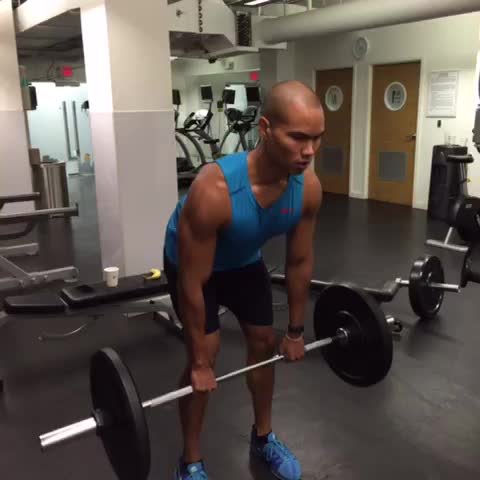
Log in to watch video demonstrations
Login to Watch3 video demonstrations available
Find more video demonstrations in the Gravitus app
Tips from the Community
-

Keep your shoulders down and drive your elbows back, moving the bar towards your belly button.
-

If you want to engage your lats more focus on pulling with your ring finger
-

Make sure you don't grab a competition bar (sharper knurling) when going for reps or your hands will hurt like hell.
-

If your wrists ache can play around with grip width or can use wrist straps to take some of the pressure off of your wrists
-

This may not be a Powerlifter friendly movement but it is a fundamental exercise all beginners should try and learn. I reccomend filming yourself from the side to make sure you have a straight back and aren’t very upright.
Track your progress with Gravitus
Download Gravitus to log your workouts, track your progress, and join a community of fitness enthusiasts.

Helpful Resources
One Rep Max Calculator
Find your one rep max for any exercise without maximal testing. Essential for developing effective strength training programs.
Calculate 1RMWorkout Programs
Follow structured workout programs created by fitness professionals to maximize your strength and muscle gains.
View Programs
